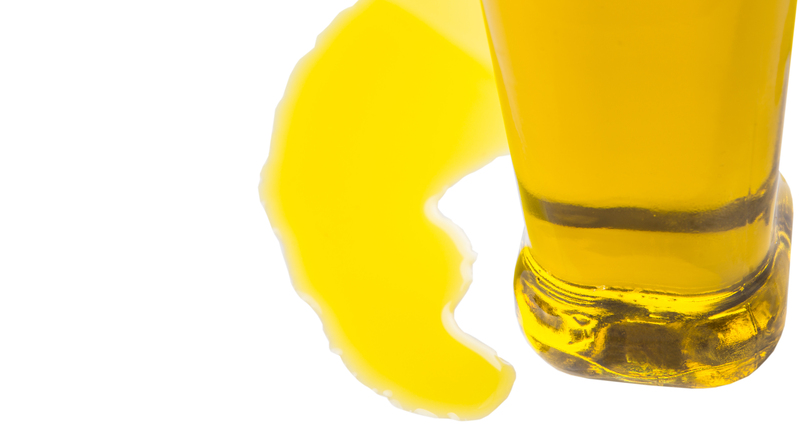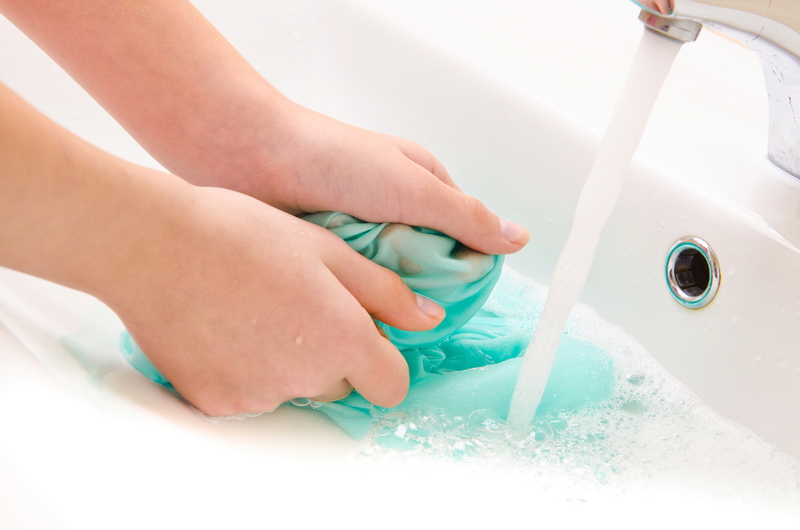Turn Your Bathroom Into a Mold-Free Zone
Posted on 19/09/2025
Turn Your Bathroom Into a Mold-Free Zone: The Complete Guide
Are you tired of dealing with unsightly mold growth in your bathroom? Mold is not only a common nuisance but also a potential health hazard that can damage surfaces and create persistent odors. The bathroom, with its frequent humidity and poor ventilation, is an ideal breeding ground for mold. Fortunately, you can transform your bathroom into a mold-free zone with the right strategies, tools, and knowledge.
Understanding Bathroom Mold: Causes & Risks
Mold is a type of fungus that thrives in damp, humid environments -- exactly what most bathrooms provide. Black mold (Stachybotrys chartarum) is one of the most notorious varieties, but several species can colonize your bathroom.
- High Humidity: Every shower or bath increases moisture in the air, leading to condensation and dampness.
- Poor Ventilation: Limited airflow prevents surfaces from drying, giving mold the constant dampness it loves.
- Organic Materials: Paper, wood, grout, and even dust on tiles offer nutrients for mold to thrive.
Health Risks: Mold spores can aggravate allergies, asthma, and respiratory issues. Exposure may also cause irritation to skin and eyes, making it important to eliminate mold quickly and thoroughly.

How To Make Your Bathroom Mold-Free: Step-by-Step
Follow this comprehensive guide to turning your bathroom into a mold-free zone, whether you're dealing with stubborn existing mold or seeking to prevent it altogether.
1. Assess Your Bathroom for Mold Hotspots
Begin by inspecting your bathroom carefully. Pay extra attention to areas where water tends to linger.
- Tile grout and caulking
- Ceilings and corners, especially near showers
- Behind and underneath sinks and toilets
- Window ledges
- Vent fans and exhausts
Look for discoloration, a musty odor, or visible specks of black, green, or white. If the affected area is extensive (beyond 10 square feet), consider consulting a professional mold remediation service.
2. Eliminate Existing Mold Growth
Once identified, address the visible mold immediately. Use safe but effective cleaning agents and tools.
- Vinegar Solution: Undiluted white vinegar kills up to 82% of mold species. Spray on the area, let it sit for at least an hour, scrub with a brush, and rinse.
- Baking Soda Paste: Mix with water to form a paste, spread on affected spots, scrub gently, and rinse.
- Hydrogen Peroxide: Use 3% hydrogen peroxide in a spray bottle for grout or tiles. Allow to bubble and work for 20 minutes before scrubbing.
- Commercial Cleaners: Choose EPA-approved mold removers for stubborn or large infestations.
Remember: Always wear gloves, a mask, and goggles when handling mold. Properly dispose of any cleaning materials you use.
3. Optimize Bathroom Ventilation
To keep your bathroom a mold-free zone in the long term, you must control humidity levels. Proper ventilation is the single most effective way to prevent mold.
- Install or Upgrade Exhaust Fans: Modern fans are quieter and more efficient. Run the fan during every bath/shower and for at least 20 minutes after.
- Open Windows: Even just a small crack allows moisture to escape and lets in fresh air.
- Dehumidifiers: In particularly damp climates or windowless bathrooms, a compact dehumidifier can further reduce moisture.
- Leave Internal Doors Open: Leave the bathroom door ajar when not in use to encourage air flow.
4. Fix Leaks and Address Water Intrusion
Water leaks, even minor ones, spell trouble for mold prevention. Regularly check:
- Pipe joints under sinks and behind toilets
- Seals around bathtubs and showers
- Caulking/Grout integrity around tubs and windows
- Water stains on walls or ceilings
Promptly repair any leaks; replace worn caulking and grout. If you see bubbling paint or sagging drywall, investigate hidden water damage -- prime territory for mold colonies.
5. Adopt Mold-Resistant Materials and Finishes
Renovating or updating your bathroom is an excellent opportunity to upgrade your defenses.
- Mold-Resistant Drywall (known as "green board")
- Waterproof Paint with Mildew-Resistant Additives
- Sealed Tile, Grout, and Caulking
- Moisture-Resistant Flooring (such as vinyl, porcelain, or sealed stone)
Pro Tip: Reseal grout and caulking every year to keep moisture from seeping behind surfaces.
6. Daily Habits That Keep Mold Away
Maintaining a mold-proof bathroom requires small, consistent habits. Here's what you can do daily:
- Squeegee Shower Walls and Doors after each use
- Wipe Down Sinks and Counters to remove standing water
- Hang Towels and Mats to Dry instead of leaving them on the floor
- Empty Bathroom Trash Regularly, especially if it contains tissues or cotton products
- Keep Bottles and Organizers Clean as mold can hide under soap dishes and caddies
Creating a routine ensures that moisture doesn't linger, which is crucial in your mission for a mold-free bathroom.
7. Use Natural Mold Inhibitors For Extra Protection
In addition to cleaning, certain natural remedies can help keep mold at bay. Consider:
- Essential Oils: Tea tree oil, lavender oil, and clove oil all have antifungal properties. Add a few drops to your cleaning sprays or diffuse them after showers.
- Baking Soda: Beyond cleaning, place open containers of baking soda in humid corners to absorb excess moisture and odors.
- Activated Charcoal: Charcoal bags or containers naturally pull moisture from the air, especially useful in closets or behind toilets.
These simple steps add another layer of protection in your mold-free bathroom zone.
The Benefits of a Mold-Free Bathroom
- Healthier Indoor Air: Reduced risk of allergies, asthma, or respiratory infections
- Better Aesthetics: No more unsightly stains, discoloration, or peeling paint
- Longer-Lasting Surfaces: Less damage to drywall, grout, and fixtures
- More Pleasant Smell: Elimination of persistent musty odors
- Increased Home Value: Clean, mold-free bathrooms are highly desirable to buyers

Signs You Need A Professional For Mold Remediation
While DIY techniques work for routine prevention and minor outbreaks, some situations call for professional help:
- Mold covers an area larger than 10 square feet
- Persistent musty odor even after cleaning
- Health symptoms persist or worsen
- Mold returns quickly after treatment
A certified mold remediation specialist will assess the underlying cause, remove contaminated materials, and provide permanent solutions, ensuring your bathroom is truly a safe, mold-free zone.
Frequently Asked Questions About Bathroom Mold
-
Q: How often should I clean my bathroom to keep it mold-free?
A: At a minimum, perform a thorough cleaning once a week and wipe down wet surfaces after each use. -
Q: Is bleach effective at killing bathroom mold?
A: While bleach can discolor mold and kill some surface spores, it does not penetrate porous materials where mold roots can survive. Vinegar or hydrogen peroxide are better alternatives for deeper cleaning. -
Q: What humidity level is ideal for preventing bathroom mold?
A: Try to keep relative humidity below 50%. Use a hygrometer to monitor bathroom moisture levels. -
Q: Can I paint over mold spots?
A: No. Paint will only temporarily hide the problem. Always clean and eliminate mold completely before repainting. -
Q: What's the best way to stop mold from returning?
A: Consistent prevention -- controlling humidity, prompt cleaning, fixing leaks, and using mold-resistant materials -- is the key to a mold-free bathroom.
Final Thoughts: Enjoy a Refreshingly Mold-Free Bathroom
By combining vigilant cleaning, smart material choices, and moisture control, you can turn your bathroom into a mold-free zone for good. You'll breathe easier, enjoy longer-lasting fixtures, and experience a consistently clean and attractive bathroom space. Prevention is always the most effective defense against mold. Implement these strategies today, and say goodbye to bathroom mold -- once and for all!
Are you ready to commit to a mold-proof bathroom? Follow the above steps, and you'll transform your bathroom into a space that's not only beautiful, but also safe and healthy for everyone in your household.
```



